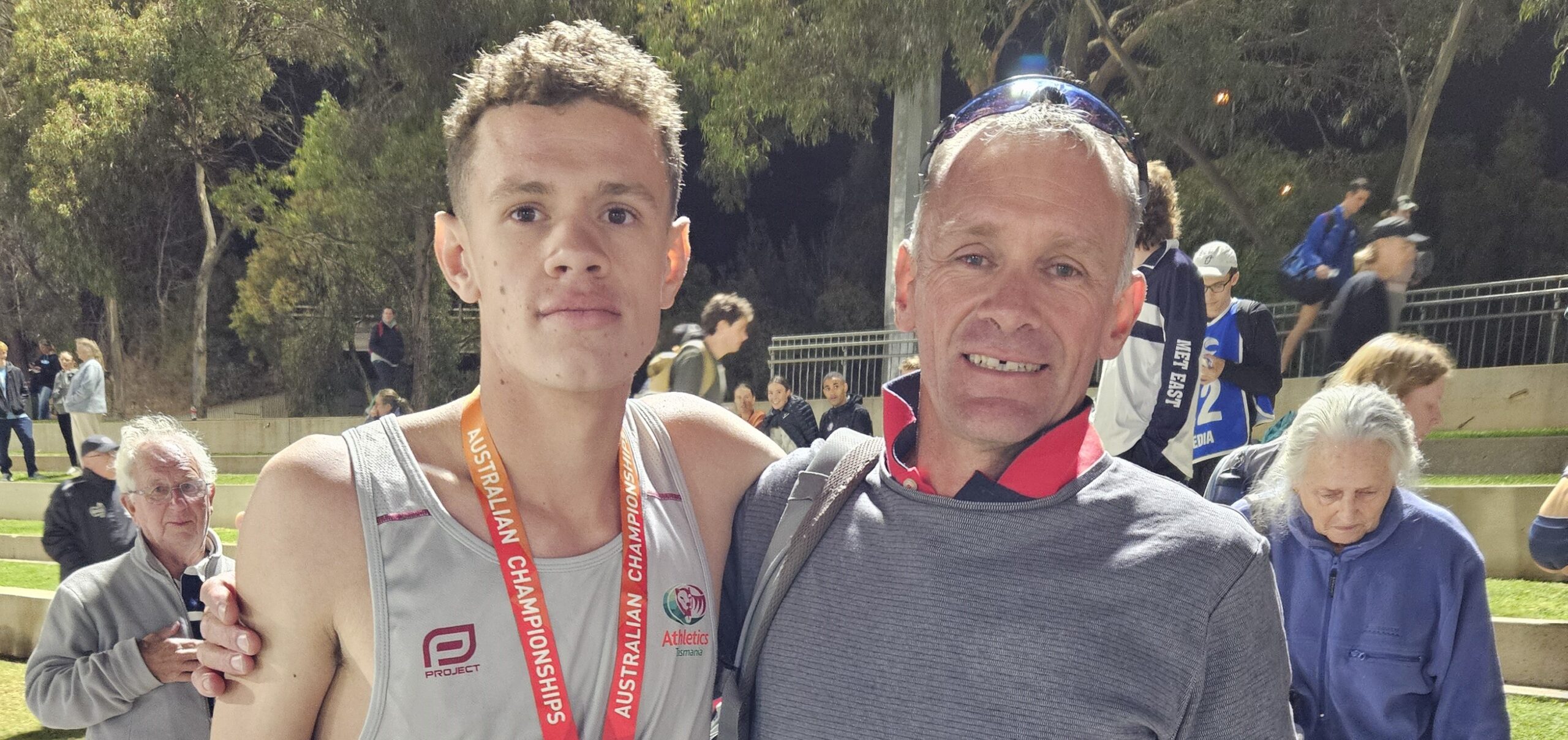
On this ANZAC Day we remember a pioneer of Tasmania athletics, Cecil Herbert Hanigan, who lost his life in Gallipoli in 1915. Two generations later the name Hanigan is still associated with athletics with two great nephews’ representing Australia in athletics.
Born on 28 May 1885, in Saltwater River in Tasmania (current population 123), Cecil Hanigan was the first ever Tasmanian State champion when on 30 August 1902 he won the inaugural State 7 Miles Cross Country Championship at the age of just 17. The cross country was certainly a gala event as The Examiner Newspaper reported:
“Under perfect weather conditions the Tasmania Amateur Athletic Association held its grand cross-country championships event and trial of hunters on the New Town Showground this afternoon. His Excellency the Governor Lady Havelock, the Premier Sir Elliott Lewis and his Worship the Mayor honoured the occasion with their presence.”
A description of the race was “After a most interesting race, victory rested with C Hanigan of New Town, who had a minute to spare from the veteran Tom Hallam.“
Tasmania Amateur Athletic Association had only been formed in 1902 and Cecil was one of the founding members.
It would be another two seasons, until 1904/05, that State Championships were introduced in track and field. Cecil also competed in those inaugural Tasmania track and field championships in 1904/05, placing third in the Mile. In later years Cecil was successful as a professional runner at distances from 440 yards to the Mile. He was also a fine footballer and played Rugby Union with the North-Western Union team while living in Devonport for a few years.
In November 1914, aged 29, Cecil enlisted in the Australian Imperial Force, the first of four brother to join the colours. Cecil was appointed to H‘ Company, 15th Battalion, 4th Infantry Brigade stationed at Broadmeadows, Victoria.
Colonel John Monash was appointed as Commander of the 4th Brigade with instructions that he must be ready to leave Australia in seven weeks. The 4th Brigade along with four New Zealand Battalions, New Zealand Artillery and Ambulance units, were to make up the 2nd Infantry Division. They travelled to Egypt and then to the Gallipoli peninsula to prepare for the invasion of Turkey.
The Australian troops launched their attack on Gallipoli in the early hours of Sunday 25 April 1915. The 4th Brigade, which included Lance Corporal Cecil Hanigan, was not due to come ashore until the early evening. The Battalion War Diary for the period states the following:
“On Monday, 3 May 1915 L/Cp. Cecil Hanigan was killed in action, and from a report filed by his commanding officer Capt. J.A. Good he was buried where he fell at Courtney‘s Post. Cecil is remembered by a memorial plaque at The Lone Pine Cemetery. He was not on his own, as the 4th Brigade by May 3, had lost 2006 killed or wounded out of their landed strength of 3717, which gives an indication of the ferocious level of fighting.”
Cecil was aged 29 when he was killed. He was awarded three medals: 1914-15 Star, British War Medal and Victory Medal.
The Hanigan family wrote to the AIF pleading for the other three brothers to be sent home. The three brothers, in the 40th Battalion, had all been wounded.
Generations later successful athletics continued in the Hanigan family. Cecil’s great nephews Kealin and Brendan Hanigan both represented Australia in middle-distance running in the ‘90s. Brendan won a bronze medal at the 1992 world juniors, before going on to compete at the Commonwealth Games and world championships and winning two Australian 800m titles. His older brother, Kealin, had competed at the 1990 world juniors in the 800m and 1500m.
This year, Brendan’s son, Alex Hanigan, achieved an 800m qualifying time for the World U20 Championships and last week at the Australian U20 Championships in Adelaide, placed third in the 800 metres.
Athletics Tasmania’s servicemen are well remembered by the community. In the Tasmanian State Library Athletics Tasmania servicemen are recognised on an Honour Board, while WWI serviceman are honoured with a plaque on Soldiers Memorial Walk and Running Trail (adjacent to the Domain Athletics Centre in Hobart).
The Honour Board was only discovered in recent years in the basement of the Domain Athletics Centre. This Roll lists some 220 Tasmania Amateur Athletic Association members who served during the Great War. Of these, some 45 men died on active service.
By David Tarbotton for Athletics Australia
Assistance and references for the article: Brian Roe, Blake Steele, Wayne Fletcher, Trove and
‘Hangans At War’ By David Noakes.
Image: Cecil Hanigan

